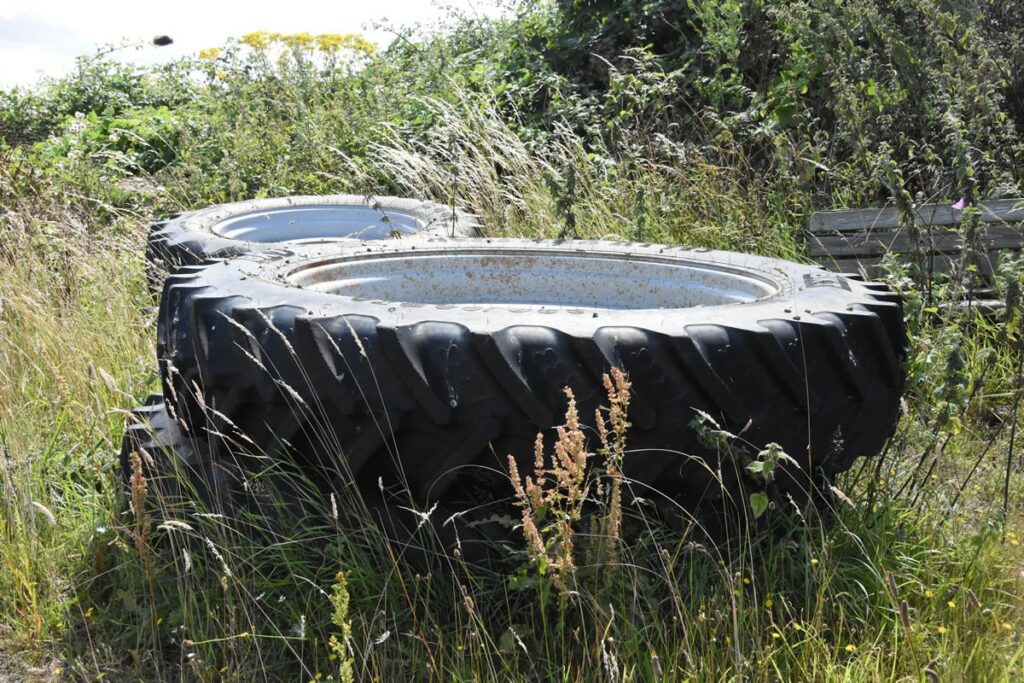Ever so often we get an excited inquiry: Have we heard about rubber being produced from dandelions? Russian dandelions (or, to be more precise: Kazakh dandelions – Taraxacum koksaghyz)? Our answer always is the same: To begin with, this is an old hat. Thomas Edison, a great friend of Henry Ford’s, tried out this – and hundreds of other ‘latex sap’ producing plants almost 100 years ago in an attempt to help the automobile pioneer to become independent of the rubber producers. At the time, production was concentrated mainly in the British Empire (with some in then French occupied Indochina). The first World War had made it abundantly clear: ‘Modern’ wars needed wheels (not horses), and having reliable sources of rubber even in times of conflict had become paramount.
In Nazi Germany this quest led to the production of synthetic rubber (as Germany no longer had any colonies). This development is another infamous part of German history: German chemical companies cooperated with the Nazi regime to develop ‘Buna’ – a project that did lead to synthetic rubber. It cost of the lives of thousands of slave labourers in the Buna site next to the Auschwitz Concentration Camp.
Henry Ford tried to establish a natural rubber plantation in the Amazon – after all: it was from here that the British in 1876 had stolen the 70,000 rubber tree (hevea brasiliensis) seeds for their rubber empire in Malaysia, Ceylon etc.. However, in Ford’s model plantation (named: ‘Fordlandia’) the rubber trees, which do well in the diversity of a rainforest, refused to cooperate. Once planted in a monoculture, the genuine rubber trees were devastated by disease. Another US venture led to the establishment of rubber plantations in Liberia. Perhaps it was a well meaning effort to provide economic opportunity to ‘repatriated’ former slaves, but there was definitely US self-interest involved, too. Today, the world’s biggest rubber plantation is in Liberia, with (arguably) the world’s worst living and working conditions in rubber production.
But back to the dandelion: Seen in light of the above history, the main argument to be made for this ‘alternative’ rubber seems to be that it is possible to grow this plant in temperate zones:: A German tyre company, with funding from the EU and German Government sources has established ‘dandelion plantations’ and processing in North Germany. And yes, the rubber is fit for purpose, a tyre has been produced.
A related argument is that rubber plantations are not very flexible when it comes to supply and demand: It takes seven years before the rubber tree can be harvested for the first time. Dandelions are an annual crop, i.e. they could be ‘switched on and off’ as a source as per requirements. But at what cost – financially and to the environment? The ‘Russian Dandelion’ contains 10% rubber sap. How much can be produced from a small – compared to a tree – annual plant? And while rubber plantations are monocultures, too, they require little to no chemical input and actually are great absorbers of CO2 because of their dense leaf canopy. Growing dandelions to produce the maximum volume of latex will in all likelihood require a lot of chemical fertilizers – tree roots are just so much more efficient – and there is simply more sun available for the rubber trees to convert abundant tropical sunshine by way of photosynthesis into rubber. ‘Raw latex milk’ contains on average 30% DRC (Dry Rubber Content) – and the trees can be tapped dozens of times over a year. Furthermore, the huge areas needed to produce enough dandelion-rubber would compete with areas needed for food production. So we wonder: Why this expensive effort to find an expensive alternative, when the ‘real thing’ is available in abundance? The last 100 years of heavea brasiliensis have been characterized mostly by over-supply and low prices for rubber – often below the cost of production. So why not simply pay a fair price to the producers of the real thing, providing a decent income to the small farmers and tappers – as well as an incentive to look after their rubber trees for the future?

